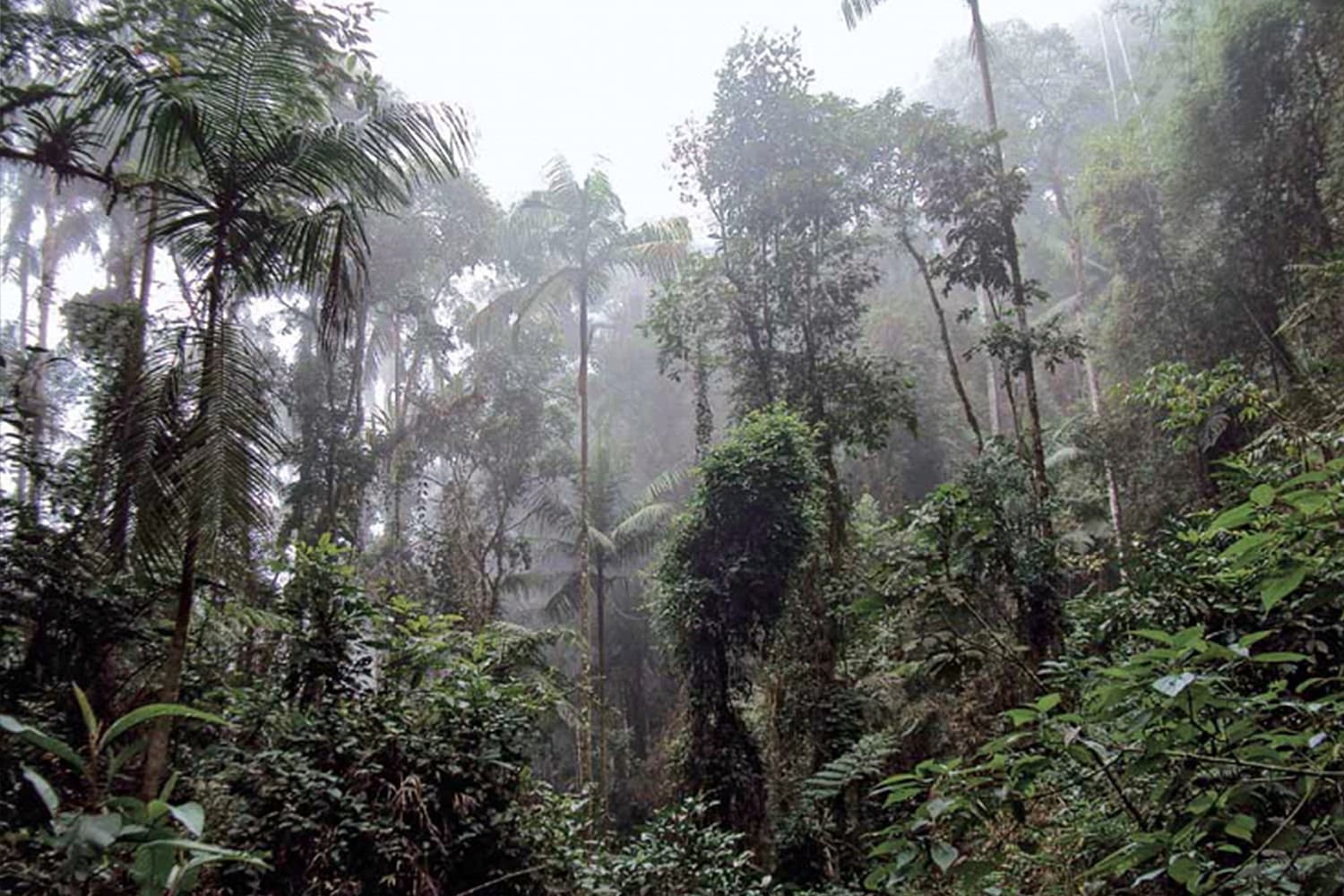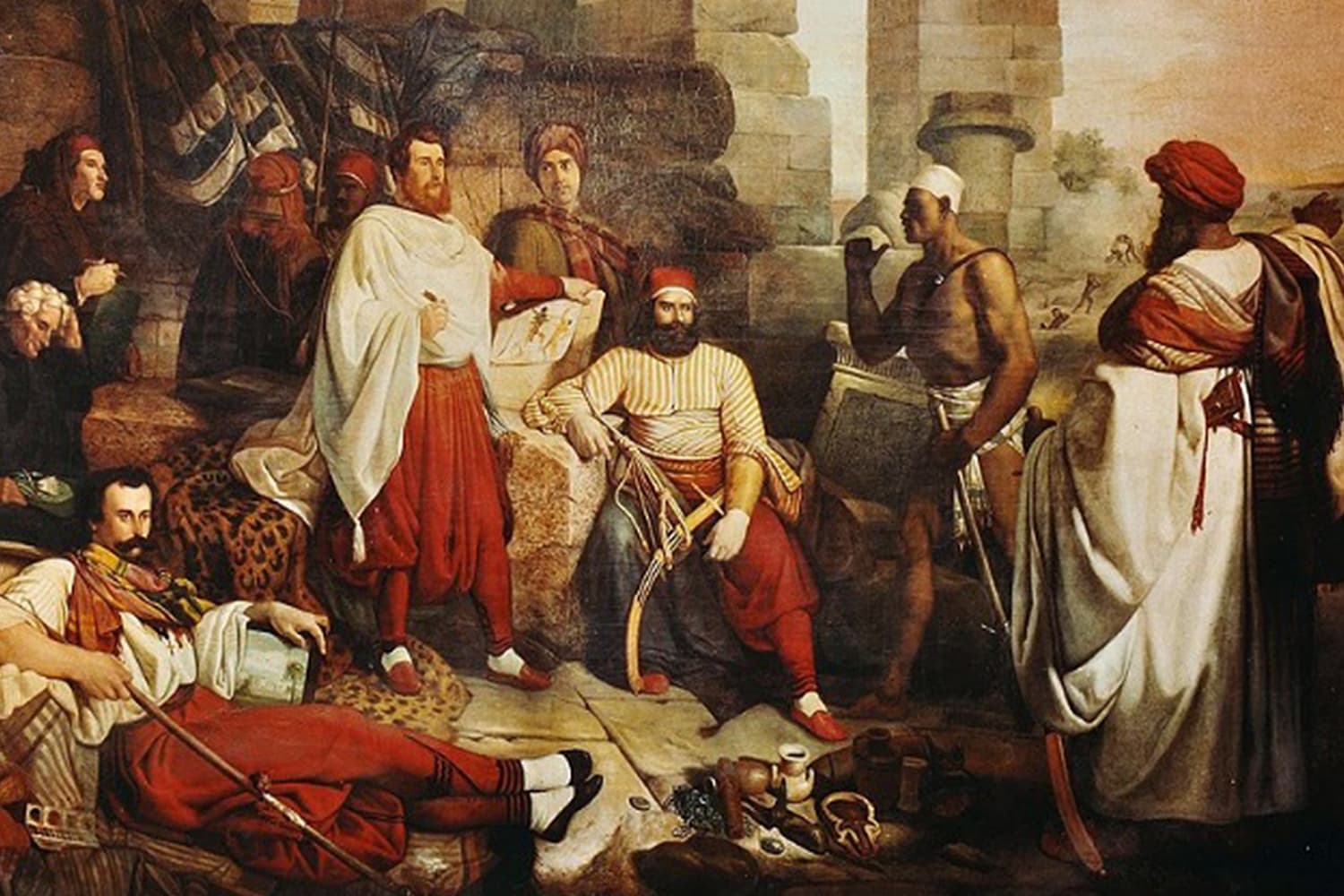
A whole series of tasks were linked to this new use, from the maintenance and organisation of the collections, to their display on the premises, to the most disparate administrative operations, which Raddi immediately undertook to fulfil with scrupulousness and zeal.
However, he knew how to use the little free time he was granted by such heavy tasks for the benefit of his studies and professional growth, as evidenced by the first publications that appeared between 1806 and 1808, devoted to fungi and cryptograms.
He was then able to make further use of this period by also concentrating on the study and learning of languages: Latin, then frequently used in the field of systematics, German, French and English, the mastery of which proved very useful in illustrating the museum’s collections to foreign visitors.
Raddi’s life and professional career took a serious turn from 1807, when Count Girolamo Bardi succeeded Giovanni Fabbroni, an admirer and personal friend of the Florentine botanist, as director of the museum.
In a Florence controlled by the French since 1799, the new director decided to remove the role of museum caretaker and consignee from the staff list, effectively depriving Raddi of his salary and the house attached to the museum where he lived with his wife for years and their five children.
Even away from home he continued to correspond with renowned European botanists.
A fundamental turning point in his life occurred thanks to the collapse of the First French Empire and above all the consequent restoration of Ferdinand III to the Grand Ducal throne which involved Raddi’s reinstatement to his former post from 31 December 1814.
Finally, once his economic and family situation had stabilized, he was able to return to his studies and research with enthusiasm. Indeed, on 9 June 1817, he presented to the Italian Academy of Sciences the Memoir on the “Jungermanniografia Etrusca”, considered by many to be his masterpiece. This work, in which Raddi highlights his critical and innovative spirit in the interpretation of a wide range of plants such as liverworts, had great repercussions in Italy and internationally, so much so that in a short time both the flying copies and those published in 1818 in volume XVIII of the Acts of the Academy of Sciences of Modena were sold out.
To give further emphasis to the extraordinary fortune of the work, one cannot fail to mention that as late as 1841, years after the author’s death, the great German botanist Christian Gottfried Nees edited a posthumous edition printed in Bonn.
The departure of Princess Leopoldina from Austria to Brazil, where she was to marry the future Emperor Pedro I, offered Raddi the opportunity to resume botanical research in a country rich in plant essences.
Following the example of several German scientists, he asked and obtained permission from the Grand Duke to join the princess’s entourage and prepared for the journey with the usual scrupulousness, embarking in Livorno on the Portuguese ship San Sebastiano, which left for Rio de Janeiro on 13 August 1817.



Landscapes seen from the ship, as it crosses the Strait of Gibraltar.
A short stop by the ship on the island of Madeira, between 11 and 13 September, allowed Raddi to obtain a lot of information about the local crops and get a small flora of the plants.
However, his studies were notable during his stay on Brazilian soil, which began with his docking at the port of Rio on 5 November.
In this city he witnessed the great feasts given to Princess Maria Leopoldina, which, with the addition of details about the customs and economy of the South American country, he promptly described in some letters sent to the family and the Tuscan Prime Minister Vittorio Fossombroni.
Although limited by the meagre funding granted to him by the Tuscan government, he managed to make numerous excursions in the province of Rio de Janeiro, making his way along the coast as far as the island of Santa Catarina.
Collecting an enormous collection of samples of plants, seeds, insects and a number of preparations of birds, reptiles and fish, he returned on 1 June 1818, arriving on 19 August the following day at Genoa, from where he returned by sea to Livorno.


Once brought to Tuscany, the Brazilian materials were assigned by the Grand Duke mostly to the Museum of Florence and to a lesser extent to that of Pisa, but their study was delayed for over two years, until Raddi was relieved by Ferdinand III of his daily duties to the museum to devote himself entirely to the classification of the collection (2 December 1820).
Without other concerns, he was thus able to devote the entire period between 1821 and 1828 to the study of Brazilian findings, concentrating on the preparation of a series of writings that appeared regularly and frequently in various Italian periodicals, mainly related to the academies of which he was a member.
The publication “Synopsis Filicum Brasiliensium” (Raddi, 1819) represents only a part of the ambitious programme of publications on the Flora Brasileira that Raddi had in mind, which was unfortunately interrupted by his premature death. It is also the first publication on tropical plants by an Italian, confirming Raddi’s place among the leading botanists of his time.

Meanwhile, in those years the French and Tuscan governments were setting up a scientific mission which, under the direction of the Egyptologists Ippolito Rosellini and Jean François Champollion, would make a long study trip to Egypt. Raddi, not wanting to miss the opportunity to resume research in the field, asked and obtained from the new Grand Duke Leopold II permission to join as a botanist.
He left Florence on July 12, 1828 with the Tuscan mission and, having called at Toulon on July 22, landed at Alexandria on the following August 18. From here, armed with a pass which allowed him to visit freely any place of his interest, he explored botanically the whole countryside as far as Rosetta and followed the other members of the expedition, arriving in Cairo on 20 September. From the capital he proceeded in the company of colleagues to Thebes and from there climbed to the First Cataract of the Nile and then returned to the Lower Egypt region travelling in all directions. Finally, he left Rosetta on 29 June 1829 to reach Lake Bruloz and Natron Lakes, and was stricken during the journey by a violent form of dysentery which caused him to return to Cairo for treatment.
In mid-July, an improvement in his condition gave hope of an imminent recovery, but on the 24th of the same month his illness worsened so much that later, confident that he could be better treated at home, he decided to embark for Italy.
When his ship arrived near Rhodes on 6 September, his health conditions were so desperate that he had to be hurriedly landed on the island, where he died the next day, 6 September 1829.



The news of Raddi’s sudden death was received with great condolences in Florence and throughout European scientific circles where he was widely known, not least for his correspondence with some of the greatest botanists.
He was also a member of the Academy of Sciences, Letters and Arts of Lucca, the National Academy of Sciences called XL, the Georgofili Academy, the Linnaean Academy of Paris, as well as the Medical-Botanical Society of London.
Gaetano Savi, a lifelong friend, dedicated a publication to him containing the catalogue of published works, the fund-raising poster for the construction of a commemorative monument and the list of subscribers. (Image Source).
Later the epitaph was erected in the Basilica of Santa Croce accompanied by an epigraph in which the famous Florentine naturalist is remembered as the “Ornament of Italy”.
The remains of Giuseppe Raddi were buried in the cemetery attached to the Catholic church of Our Lady of Victory in Rhodes, but, probably due to the renovations that affected the area in 1853, all traces of his tomb have been lost.
With the patronage of the Institute of Higher Studies in Florence and the Accademia dei Georgofili, a search for his grave began with the occupation by the royal army in 1912, but without success.
© 1) Carlos Emilio de Sá e Silva. 2) Pleroma fothergillii (DC.) Triana (=Rhexia triflora Raddi): Renato Goldenberg – Abril/2007. Dunas do Paraná / Paraná / Brasil. 3) Didymochlaena pulcherrima: Paulo Henrique Labiak Evangelista. 4) Miconia melastomoides (Raddi) : R.Goldenb. – Fevereiro/2012. 5) Trichomanes pilosum: Paulo Henrique Labiak Evangelista.